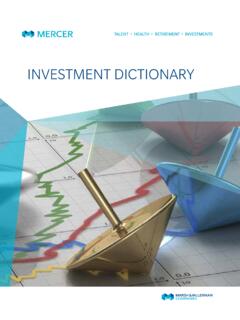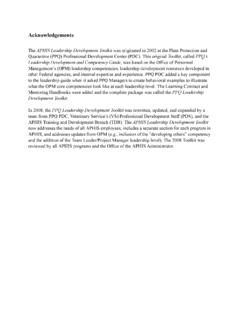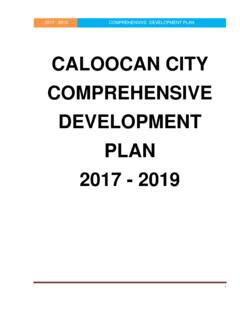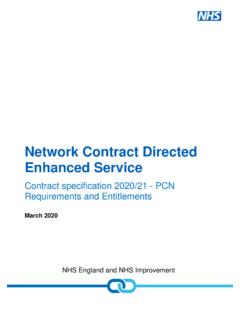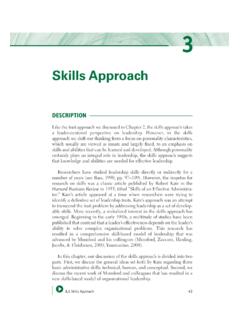Transcription of DEVELOP AN EFFECTIVE RETENTION STRATEGY TO …
1 GRAPHIC AREADEVELOP AN EFFECTIVE RETENTION STRATEGY TO ENHANCE M&A DEAL SUCCESS2 More and more companies today recognize that talent is one of the essential components in the success of M&A transactions. In many cases, achieving the promised value of a deal depends as much on the skills and experience of key executives and employees as on any other attribute. Companies are more likely to retain the best people in both legacy organizations and therefore position themselves to succeed when they focus not only on the financial and operational aspects of the deal, but also on talent DEALS CREATE SPECIAL TALENT RISKSEven at the best of times, companies often struggle to engage and retain the talent that can help them succeed.
2 A divestiture or an acquisition only magnifies this challenge, from increasing employees perceptions of risk and uncertainty. Concern about the organization s future and their own can increase the motivation for some individuals to consider alternative employment. Other issues confusion about business STRATEGY , problems with integrating the two entities organizational cultures, a lack of role clarity, and a failure to effectively communicate with the workforce also can undermine employee engagement and leave organizations vulnerable to losing key talent. When those at-risk employees are critical to integration or to the organization s long-term success, their potential departure poses a serious threat to anticipated deal ROI and to the very survival of the new entity.
3 DEFINE A HOLISTIC TALENT STRATEGY TO ADDRESS RISKSP roviding RETENTION bonuses for key talent is one response to this risk. Although RETENTION bonuses are a vital component of an overall RETENTION STRATEGY , it is critical to first establish an EFFECTIVE overall talent before relying on RETENTION bonuses, organizations must support RETENTION and engagement by ensuring that broader talent management components are in place. To ensure the commitment and high energy needed for success, companies must consider the structure of the new organization, leadership roles and responsibilities, reporting relationships, job content, and how they will reward employees going forward.
4 In addition, for key individuals, organizations need to DEVELOP comprehensive RETENTION plans that comprise all elements of the employment value proposition. By supporting RETENTION holistically, the organization is more likely to retain critical talent without overpaying for that talent. Companies involved in an M&A transaction can best support RETENTION when they: Establish an organizational structure that is aligned to the new entity s business STRATEGY and that will enable employees to execute on that STRATEGY . Clearly define and assign roles within the new organization so individuals understand where they fit into the new organization.
5 By supporting RETENTION holistically, the organization is more likely to retain critical talent without overpaying for that talent. 3 DEVELOP a cultural integration plan to mitigate the risk of different cultures and work styles undermining success. Companies need to engage senior leaders early in the deal to define and agree on the organizational culture necessary to deliver deal success. A culture audit can both provide understanding of the differences between organizations and uncover common ground, allowing leaders to identify risks and DEVELOP an appropriate integration plan. Educate the workforce about the objectives of the deal and about the new business STRATEGY , so each person can own and contribute to deal success.
6 Understand the needs and goals of critical employees so RETENTION efforts are well-aligned to those individual A STRATEGIC RETENTION PLAN: MERCER S FOUR-STEP APPROACHA fter evaluating the overall talent STRATEGY , organizations will conclude that a targeted RETENTION program is needed. They many determine additional financial incentives will be needed to promote RETENTION . Below is Mercer s four-step methodology to program design. STEP 1: EXAMINE WHETHER A RETENTION PLAN IS CRITICAL TO DEAL first step is determining whether a RETENTION plan is truly needed in order for the deal to be successful. To answer this, HR executives need to consider several questions.
7 How important are our people to deal success?The organization must evaluate the importance of talent given the deal objectives. For example, if the main goal is to increase market share or acquire certain technology, talent may not be key to success. In Mercer s view, however, it is the rare transaction in which the organization s short-term or ongoing success is not dependent to a degree on retaining key individuals for some period of nonfinancial RETENTION levers already exist?In deciding whether to DEVELOP a RETENTION plan, an organization must also look at the existing employment value proposition to understand the financial and nonfinancial rewards employees already receive and to identify potential gaps.
8 Starting with the nonfinancial elements of the value proposition, companies should carefully evaluate key talent s career plans and whether the transaction has the potential to offer highly prized career opportunities. When individuals perceive a meaningful role for themselves in the new organization one that aligns with their career aspirations this can powerfully impact RETENTION and engagement. Should we offer a supplemental RETENTION bonus?Because the companies involved in a transaction may already offer rewards that encourage RETENTION , a gap analysis can help them understand whether a supplemental RETENTION bonus is also needed.
9 In conducting a gap analysis, HR executives should review: A culture audit can both provide understanding of the differences between organizations and uncover common ground, allowing leaders to identify risks and DEVELOP an appropriate integration plan. 4 Existing pay packages. If current pay packages are well above market, critical talent is unlikely to leave just because of the transaction. On the other hand, if pay is low relative to the market, the organization may risk losing key individuals. Existing incentives. Existing long-term incentive programs may have a retentive effect if they are structured such that departing talent will have to forfeit substantial rewards.
10 Increased rewards due to promotion. A high-caliber employee may be unlikely to leave if, as a result of the transaction, he or she receives a promotion that will significantly increase pay. Impact of a cash windfall. Some transactions result in windfall payouts (from accelerated equity or cash performance plans) to individuals deemed critical in the short or long term, which may encourage less-than-satisfied individuals to stay or depart. STEP 2: EVALUATE THE POPULATION FOR A STRATEGIC RETENTION the organization decides that a RETENTION program is necessary to the deal s success, it must determine who should participate.



